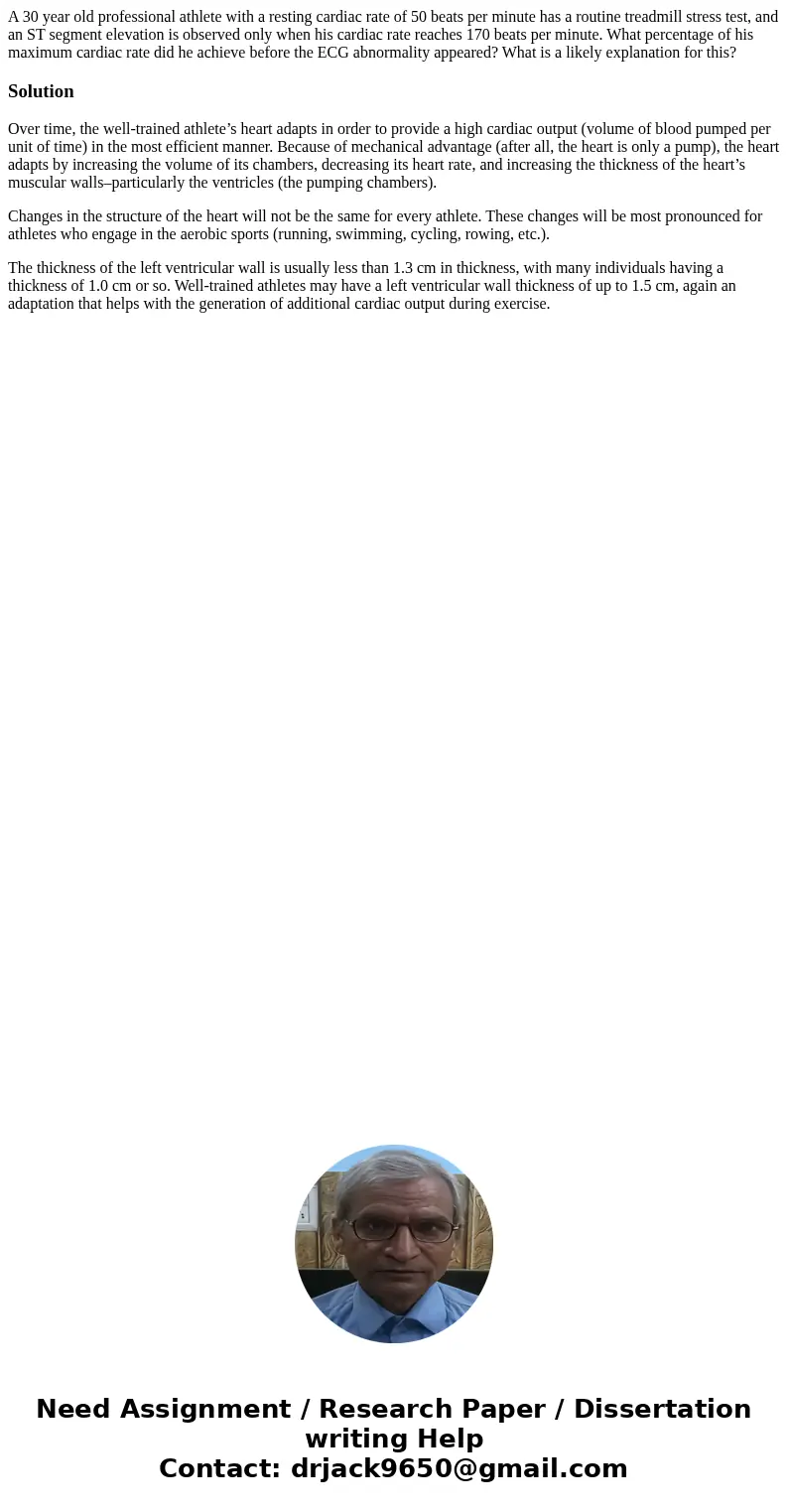A 30 year old professional athlete with a resting cardiac ra
A 30 year old professional athlete with a resting cardiac rate of 50 beats per minute has a routine treadmill stress test, and an ST segment elevation is observed only when his cardiac rate reaches 170 beats per minute. What percentage of his maximum cardiac rate did he achieve before the ECG abnormality appeared? What is a likely explanation for this?
Solution
Over time, the well-trained athlete’s heart adapts in order to provide a high cardiac output (volume of blood pumped per unit of time) in the most efficient manner. Because of mechanical advantage (after all, the heart is only a pump), the heart adapts by increasing the volume of its chambers, decreasing its heart rate, and increasing the thickness of the heart’s muscular walls–particularly the ventricles (the pumping chambers).
Changes in the structure of the heart will not be the same for every athlete. These changes will be most pronounced for athletes who engage in the aerobic sports (running, swimming, cycling, rowing, etc.).
The thickness of the left ventricular wall is usually less than 1.3 cm in thickness, with many individuals having a thickness of 1.0 cm or so. Well-trained athletes may have a left ventricular wall thickness of up to 1.5 cm, again an adaptation that helps with the generation of additional cardiac output during exercise.

 Homework Sourse
Homework Sourse